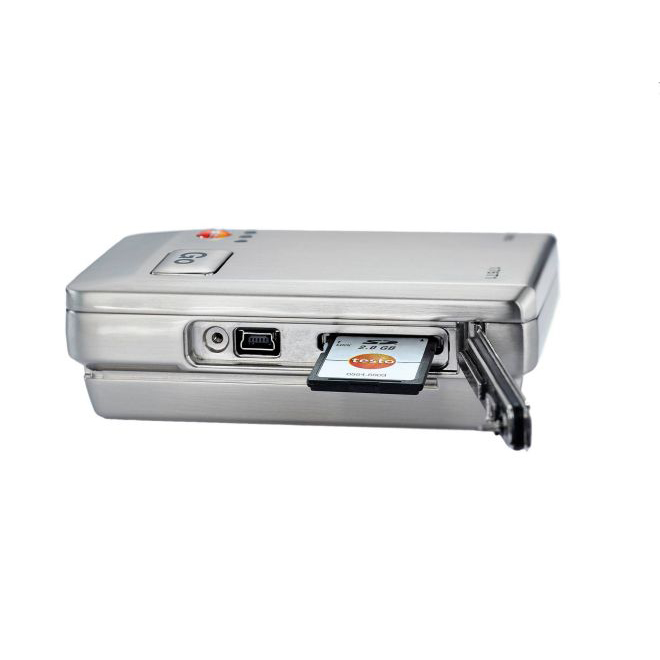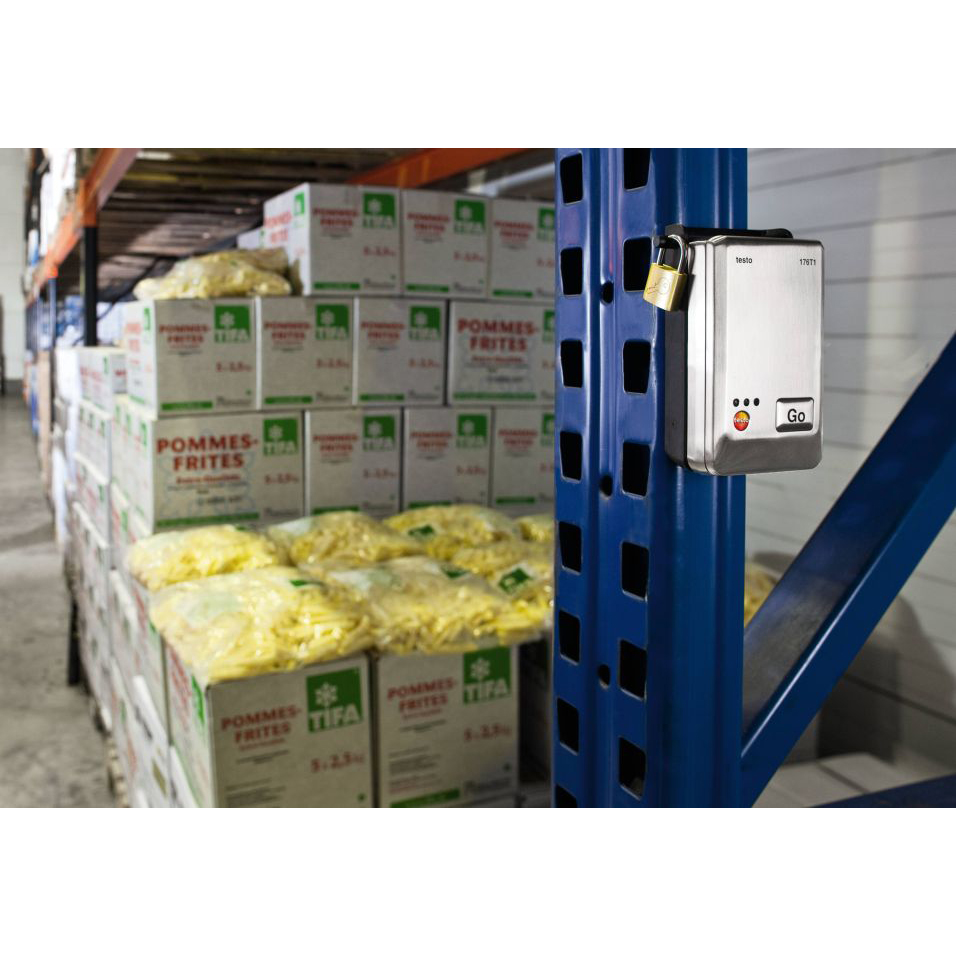Testo 176 T1
The Testo 176 T1 data logger monitors the temperature, even in extreme conditions, with a highly accurate Pt100 temperature sensor. It is able to precisely document the temperature status over a longer period of time. The fact that its metal housing is extremely robust makes the data logger particularly suitable for monitoring the temperature in industrial environments.
- Description
- Features
- Delivery Scope
- Specification
- Resources
- Software
- Case Study
The Testo 176 T1 1-channel data logger is an ideal device for high-precision temperature monitoring. It continuously and reliably records indoor air temperature in cold and deep-freeze storage facilities using its internal sensor.
The data logger uses a Pt100 temperature sensor, which measures and documents temperature with extreme precision, achieving an accuracy of up to 0.2 °C. With its large measurement data memory, it can store up to 2 million readings, enabling temperature monitoring over extended periods without frequent data logger read-out.
Additionally, its battery life of up to 8 years offers considerable advantages for long-term temperature monitoring and recording.
The testo 176 T1 temperature data logger comes with a metal housing, making it an ideal device for temperature monitoring in the industrial sector. It has the ability to repel hard impacts, which are often triggered by pallets on a forklift, and is, therefore, suitable for long-term measurements in extreme conditions.
The data logger is completely water and dust-proof and meets the IP 68 protection class requirements. It stores measurement data securely, preventing any loss even if the battery is spent or replaced.
The testo 176 T1 is certified for use in the food industry by the ATP test station at TÜV Süd in accordance with DIN EN 12830 and is HACCP-compliant.
- High-precision measurements thanks to the Pt100 temperature sensor
- Ideal for long-term measurements: memory for up to 2 million readings, up to 8 years’ battery life
- Certified according to EN 12830, HACCP-compliant and waterproof in compliance with IP 68
- Three software versions are available for data management on the PC, basic software available as a free download
- Testo 176 T1 temperature data logger with a robust metal housing and internal Pt100 temperature sensor, including wall bracket, lock, battery, and calibration protocol.
Specifications:
| Temperature – NTC | |
|---|---|
| Measuring Range | -35 to +70 °C |
| Accuracy | ±0.2 °C (-35 to +70 °C) ±1 Digit |
| Resolution | 0.01 °C |
| General technical data | |
| Weight | 390 g |
| Dimensions | 103 x 63 x 33 mm |
| Operating temperature | -35 to +70 °C |
| Product-/housing material | Plastic |
| Protection class | IP68, 1 meter |
| Channels | 1 internal |
| Standards | EU-guideline 2014/30/EU; 2011/65/EU; EN 12830 |
| Measuring rate | 1 s to 24 h; 2 s to 24 h (online measurement) |
| Battery type | 1 x Lithium (TL-5903) |
| Battery life | 8 years (15 min. meas. rate, +25 °C) |
| Interface | mini usb, SD card slot |
| Memory | 2,000,000 measuring values |
| Storage temperature | -40 to +85 °C |
You can choose between three software versions for programming and reading your data logger and for analyzing the measurement data on the PC:
ComSoft Basic software – available as a free download – for fast programming of the temperature data logger and easy data analysis
ComSoft Professional software – can also be ordered as an option – offers a variety of possibilities for detailed analysis of temperature readings
ComSoft CFR 21 Part 11 software – can also be ordered as an option – the best solution for special requirements according to CFR 21 Part 11 in the pharmaceutical sector
You need a USB interface for programming and reading the mini temperature data logger.
-
testo usb driver – for various measuring instruments (v2.9.1, EXE, 1.925 KB)USB driver for the following devices with USB port: * USB Interface testo 174 / 177 – T + H * testo 300 / 320 / 330 / 330i / 335 / 340 / 350 * testo 435 * testo 556 / 560 / 570 / 580 * testo 635 * testo 735 * testo 845
Monitoring and documentation of storage temperature
Correct compliance with storage temperatures is an important prerequisite for the quality assurance of many products, e.g. in the area of food and pharmaceutical products.
As a general rule, data loggers are used to do this. They automatically check and document the profile of the ambient temperature and thus make a crucial contribution to the verifiable preservation of product quality.
Viewing breaches of limit values directly on the display means you can respond quickly to temperature deviations. In addition, with the help of the configuration and read-out software, customer-specific measurement configurations can be carried out and recorded measurement data can be both analyzed and archived.
The use of external penetration probes means that the core temperature of goods can also be reliably monitored.
Have a Testo Data Logger in Mind?
Contact
Our Customers





